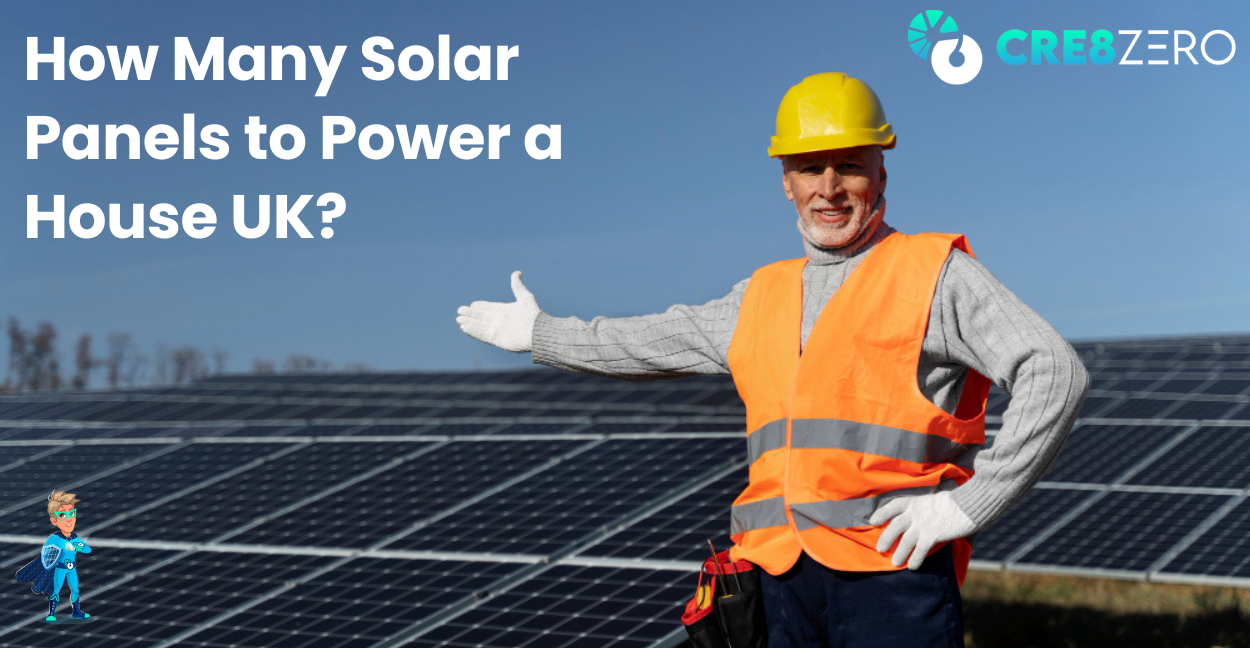When considering the switch to solar energy, one of the first questions that pops into your mind might be, “How many solar panels do I need to power my house?” If you’re in the UK, this question can get a bit more complex due to factors like geographical location, energy consumption, and the type of solar panels you choose. But don’t worry; we’re here to break it all down for you and will guide you about how many Solar Panels to Power a House UK.
What Is Solar Power?
Solar power is energy harnessed from the sun’s rays, using solar panels that convert sunlight into electricity. It’s a renewable, sustainable way to power your home, reducing reliance on fossil fuels and lowering your carbon footprint.
Factors That Influence the Number of Solar Panels Needed
1.) Energy Consumption
The amount of energy your household consumes directly impacts how many solar panels you need. To determine your energy consumption, you can review your energy bills, which typically provide data on your monthly and annual electricity usage in kilowatt-hours (kWh).
- Seasonal Variations: Keep in mind that your energy needs may fluctuate throughout the year. For example, you might use more energy in winter due to heating requirements or during summer due to air conditioning.
- Lifestyle Factors: Consider how many people live in your home, the number of devices you use, and your daily habits. Larger families or homes with more electrical appliances will have higher energy needs.
How to Calculate Your Energy Needs
To get a clear picture of your energy consumption:
- Total Annual Consumption: Add up your monthly bills to find your total annual consumption.
- Daily Usage: Divide your total annual consumption by 365 to get your average daily usage, which will help you estimate the number of solar panels needed to meet that demand.
2.) Solar Panel Output
The wattage of solar panels varies, and this rating significantly affects their output. Most residential solar panels range from 250 to 400 watts. The panel’s wattage indicates how much electricity it can produce under optimal conditions.
- Average Annual Output: For example, a 300-watt solar panel in the UK typically produces about 250 to 300 kWh of electricity per year, depending on factors like weather conditions and orientation.
- Efficiency: More efficient panels convert a higher percentage of sunlight into electricity, meaning fewer panels are needed to meet your energy needs.
Calculating Output
When considering solar panel output, calculate how much energy each panel will generate annually based on its wattage and efficiency, and factor this into your overall energy consumption.
3.) Location and Sunlight Exposure
The location of your home plays a crucial role in determining how much sunlight your solar panels will receive. In the UK, sunlight availability varies across regions, with southern areas typically receiving more sunlight than northern ones.
- Sunlight Hours: On average, the UK gets about 1,000 to 1,200 hours of sunlight per year. However, this can be significantly lower in winter months.
- Climate Considerations: Areas with frequent cloudy or rainy days may not produce as much solar energy. It’s essential to consider local weather patterns when evaluating solar potential.
Assessing Sunlight Exposure
- Shading: Examine your property for trees, buildings, or other structures that may cast shadows on your roof, as this can significantly impact panel efficiency.
- Orientation and Angle: Ideally, solar panels should be oriented south and tilted at an angle of about 30-40 degrees to maximize sunlight exposure. If your roof doesn’t meet these criteria, you may need additional panels to compensate for reduced efficiency.
4.) Roof Size and Orientation
The size and orientation of your roof are critical in determining how many solar panels you can install. Not all roofs are suitable for solar installations, and several factors should be considered:
- Available Space: Measure the usable area of your roof, accounting for chimneys, vents, and other obstructions. Each solar panel typically requires about 17 to 20 square feet.
- Roof Type: The material and structure of your roof can also impact installation. Flat roofs might require different mounting systems than pitched roofs.
Orientation and Angle Considerations
- Optimal Orientation: South-facing roofs generally capture the most sunlight, followed by east and west orientations. North-facing roofs typically receive the least sunlight and may not be ideal for solar panels.
- Tilt Angle: The angle at which your panels are installed affects their exposure to sunlight. A tilt angle between 30 and 40 degrees is often recommended for maximum energy capture.
5.) Solar Battery Storage
Incorporating a solar battery storage system allows you to store excess energy generated during the day for use at night or during cloudy periods. This can influence the number of solar panels needed.
- How Batteries Work: When your solar panels generate more electricity than your home uses, the excess energy can be stored in batteries. During low production periods, you can draw on this stored energy instead of relying on the grid.
- Efficiency Gains: By using a battery system, you may need fewer solar panels since you can utilize stored energy during peak usage times.
Assessing Your Needs
When considering battery storage:
- Daily Usage Patterns: Evaluate your energy usage patterns to determine how much-stored energy you might need during the evening or on cloudy days.
- Battery Capacity: Larger capacity batteries can store more energy, potentially allowing you to reduce the number of solar panels needed to meet your energy needs.
6.) Local Regulations and Incentives
Local regulations and incentives can significantly influence the feasibility and number of solar panels you might need for your home. Understanding these factors can help you make informed decisions.
- Permitting and Installation Guidelines: Different regions may have specific regulations regarding solar panel installations, including permits, inspections, and zoning laws.
- Incentive Programs: The UK government offers various incentives, such as the Feed-in Tariff (FiT) and Smart Export Guarantee (SEG), which can affect the overall cost and return on investment for solar installations.
Are you ready to harness the power of the sun and reduce your energy bills? At Cre8 Zero, we specialize in providing tailored solar solutions that meet your unique energy needs. Our team of experienced professionals is dedicated to helping homeowners in Brighton & Hove make the switch to solar energy seamlessly. Contact us today for a free consultation and see how many solar panels you need to power your home efficiently!
Calculating the Number of Solar Panels Needed with an Example
Calculating the number of solar panels needed to power a house is a crucial step in the solar installation process. It involves understanding your energy consumption, the output of the solar panels, and some specific calculations. Here’s a detailed breakdown of how to calculate the number of solar panels required, including an example for clarity.
Understand Your Energy Consumption
The first step is to figure out how much electricity your household uses. This is usually measured in kilowatt-hours (kWh), which indicates the amount of energy consumed over time. A good starting point is to check your utility bills from the past year. They will show your monthly energy usage, which will give you a clear picture of how much electricity you consume on average.
For instance, let’s say your average monthly usage is around 520 kWh. This figure will help you understand how much energy your solar panels need to generate to cover your consumption.
Determine Solar Panel Output
Next, you need to know how much energy a single solar panel can produce. Most residential solar panels generate between 250 watts to 400 watts. To make things simple, let’s assume you’re using panels that produce 300 watts.
The energy output of a solar panel depends on several factors, including its efficiency and the amount of sunlight it receives. In the UK, an average solar panel might receive about 4 hours of sunlight each day. By multiplying the panel’s wattage by the number of sunlight hours, you can estimate how much energy it can produce in a year.
For example, if one panel produces about 438 kWh annually, this figure indicates the amount of electricity one panel can generate to contribute to your household’s energy needs.
Estimate the Number of Panels Needed
Now that you know your energy consumption and how much energy a single solar panel can produce, you can estimate the total number of panels required.
Continuing with our example, if your household consumes about 6,250 kWh per year, you would divide this annual energy requirement by the annual output of one solar panel (which we assumed is 438 kWh). This process would reveal how many panels you need to install to cover your energy usage.
In this scenario, you’d find out that you need around 15 panels to fully meet your energy needs.
Factor in System Losses
While you’re calculating, it’s essential to consider that solar systems can experience some energy losses. These losses can occur due to various reasons, such as inefficiencies in wiring, inverter performance, and other factors, which might reduce the amount of usable electricity. A common estimate for these losses is about 15%.
To ensure you don’t fall short on energy, it’s wise to adjust your panel count upward to account for these potential losses. Instead of the initial 15 panels, you might find that you actually need around 17 panels to reliably cover your energy needs throughout the year.
Transform your home into an eco-friendly powerhouse with Cre8 Zero, the leading solar installers in Brighton & Hove. Our commitment to quality and customer satisfaction ensures you receive the best service from start to finish. Don’t miss out on the opportunity to save on energy costs while contributing to a greener planet. Reach out to us now, and let’s discuss how our solar solutions can meet your energy needs!
Frequently Asked Questions (FAQs)
How do I determine my home’s energy consumption?
To determine your home’s energy consumption, start by reviewing your utility bills. Most bills provide a monthly breakdown of your electricity usage in kilowatt-hours (kWh). You can calculate your average monthly usage by adding up the kWh from the past 12 months and dividing by 12. Alternatively, you can use energy monitoring devices to track real-time usage. Understanding your consumption helps you gauge how much solar energy you’ll need to generate.
What factors influence the output of solar panels?
Several factors can influence the output of solar panels, including:
- Panel Efficiency: Higher-efficiency panels convert more sunlight into electricity, generating more power in the same amount of space.
- Sunlight Hours: The amount of direct sunlight your location receives daily impacts energy production. Areas with more sunny days typically generate more electricity.
- Orientation and Tilt: The angle and direction of your solar panels affect their exposure to sunlight. Panels facing south at an optimal angle generally produce the most energy.
- Weather Conditions: Cloud cover, rain, and other weather conditions can reduce sunlight exposure, affecting energy output.
- Shading: Trees, buildings, or other obstacles that cast shadows on the panels can significantly decrease their efficiency.
How many solar panels do I need if my energy consumption changes?
If your energy consumption changes, you’ll need to recalculate the number of solar panels required. For instance, if you add new appliances or increase your electricity usage, you should assess your new average consumption. Then, repeat the calculations based on your updated usage and the energy output of your solar panels. If your consumption decreases (for example, by adopting energy-efficient appliances), you might be able to reduce the number of panels needed.
Are there incentives for installing solar panels in the UK?
Yes, the UK offers various incentives for installing solar panels, which can help reduce upfront costs. Some of these include:
- Feed-in Tariffs (FiTs): Although the FiT scheme has closed to new applications, existing participants can still benefit from guaranteed payments for the energy generated and exported to the grid.
- Smart Export Guarantee (SEG): This allows you to sell excess energy generated by your solar panels back to the grid, providing an additional income stream.
- Renewable Heat Incentive (RHI): While primarily for heating systems, if you integrate solar panels with heating solutions, you may be eligible for this incentive.
- Local Grants and Schemes: Some local councils and authorities offer grants or financing options for renewable energy projects. It’s worth checking with your local council for any available support.
How long does it take for solar panels to pay for themselves?
The payback period for solar panels can vary based on several factors, including the initial installation cost, local electricity prices, government incentives, and your energy consumption. Generally, homeowners in the UK can expect to see a return on their investment within 6 to 10 years. After this period, the energy savings and potential earnings from selling excess energy can lead to significant savings over the lifespan of the solar panels, which can last 25 years or more.
Contact Cre8 Zero
Are you ready to make a positive impact on the environment while reducing your energy costs? Our team specializes in Solar Panels & Inverters, Battery Storage, and EV Chargers, offering tailored solutions for homes and businesses in Brighton & Hove. Whether you’re looking to harness solar power, store excess energy, or switch to electric vehicles, we have the expertise to guide you every step of the way. Contact us today to schedule a consultation and discover how we can transform your energy usage for a brighter, more sustainable future.









